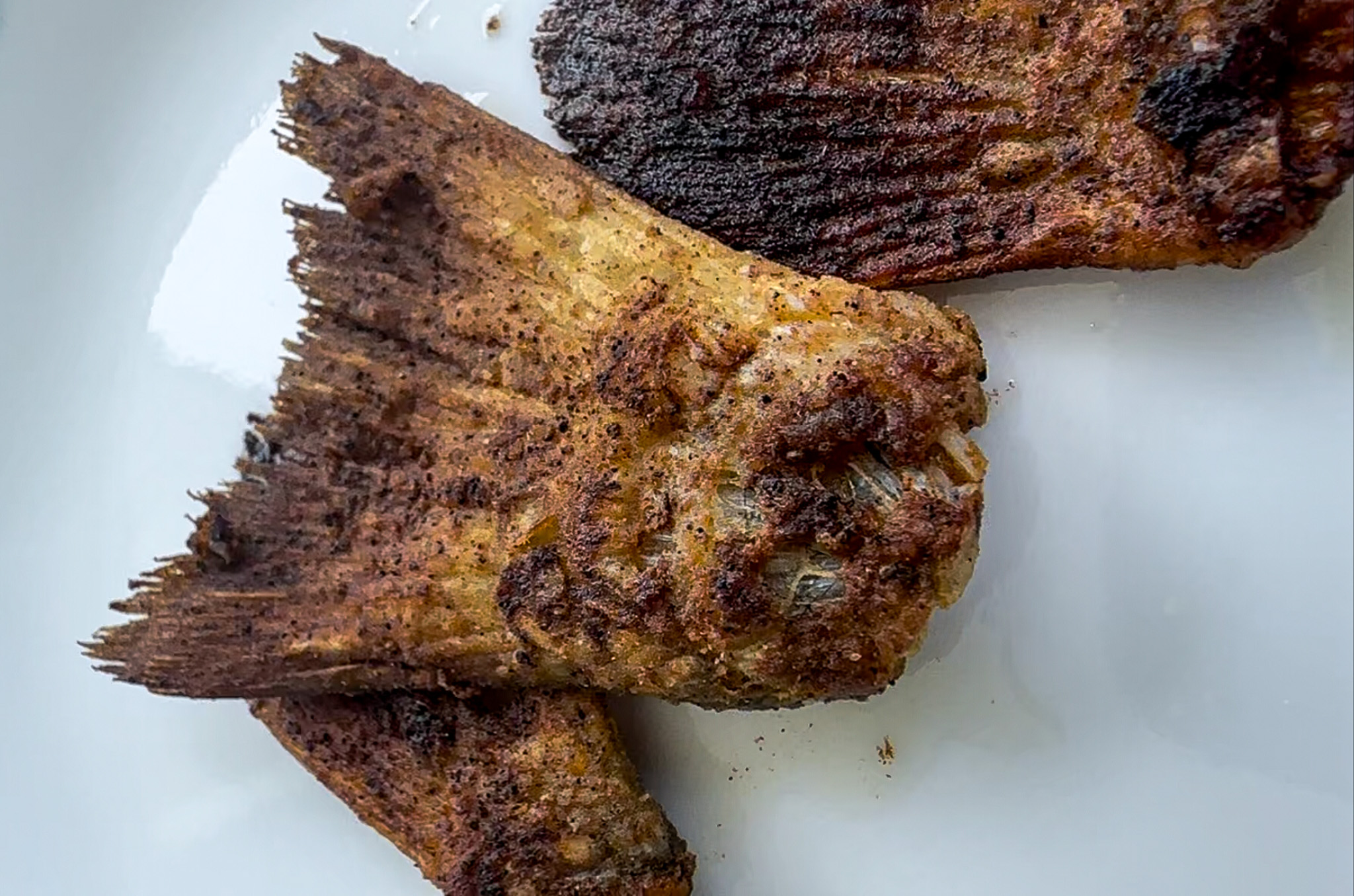
I wish I could say that I am about to show you a culinary treat that my family and I have been enjoying for years, but that is simply not the case. I ate my first fried fishtail just a week before I wrote this column. For some of you, nibbling on crispy, crunchy fins is old news, but despite the fact that I have eaten fish my entire life, all of the fins went into the trash before a recent push from a guest on my podcast who knows much more than I do about how to get the best return on your catch.
Reed Brand — better known as “Reedthefishmonger” — has built an impressive following on YouTube And InstagramHis family owns it Captain Clay and Sons Fish Market in Delray Beach, Florida, and Brand’s highly educational and somewhat addictive fish processing videos have become wildly popular on social media. The first video he ever posted to YouTube was a fishtail taste test. Brand bakes a variety of tails, from salmon to cod to tilefish, in the oven and rates their flavors and textures. When I asked Brand about tail consumption, he quickly made it clear that I was missing something. So I vowed to look into it. Here’s what I learned.
It’s not that weird
According to Brand (and several other podcast listeners who reached out to us after the show aired), eating fish tails is a common practice in many cultures, particularly those where fish is cooked whole rather than just boneless fillets. In fact, Brand says that in many island cultures, for example, tails are often fought over in families because they’re considered a real treat—much like you and I fight over who gets the crispiest bit of skin on a roast chicken. Before you judge me for not liking eating tails anymore, I’ll openly admit that I’ve never been a huge fan of whole fish dishes. For better or worse, I’m not one to order the whole fried snapper at the Cuban restaurant or the whole steamed fish at the Japanese restaurant. I’ve eaten my fair share of fish cheeks, throats, and “wings,” but never a tail. Brand, however, maintained that when prepared properly, they’re like a fishy, salty potato chip. The trick is to choose the right tails for frying.
Size matters
You can eat the tails of any fish caught in saltwater or freshwater, but keep in mind that the goal is for the end product to be crispy and flake like a potato chip in your mouth. With the tails of larger fish, like a striped bass or salmon, the thicker fin rays in that tail make it difficult to eat the whole thing down to the base. You’ll get a few good bites out of the thinner leading edge, but not much more. Meanwhile, smaller fish with generally thinner tails provide a snack that you can squish and eat like Pringles. Brand noted that fish with longer, flowing fin rays have some of the best tails for frying. He says that black sea bass in my northeastern corner of the woods are the best tails to eat. My listeners have also told me that trout and bass tails fry really well.
The taste test
I’m a man of my word and promised Brand I would shake fish tails, and my plan was to start with flounder tails. The only problem was that my last two flounder flights at the Jersey Shore had been a bit weak. However, I’m good at making lemonade—especially with a 6-year-old on board—so we switched to the piles of croaker and spot that flood the bay in the summer. Although these little fish are tricky to fillet, my son wanted them for dinner and I obliged. Their tails weren’t huge, but they were nice and thin, so I reserved them at the cleaning table and decided to make “chips.”
Brand says it’s hard to beat a fishtail cooked in bacon grease, but I went with olive oil. I made a simple mixture of flour and Old Bay seasoning and quickly coated the tails. Since posting a video of the result on Instagram, I’ve learned that some people think a flour coating isn’t necessary, though Brand says it adds a bit of extra crunch and flavor, and I tend to agree.
I quickly learned that you have to watch the heat carefully, because little tails cook quickly. A little charring is good, but they will quickly become too black if you’re not careful. My croaker tails were golden brown, and I could see why so many people eat them after the first bite. The tail had the crunch of a potato chip and a nearly identical mouthfeel. The flavor, however, was unique. You know you’re eating fish, but it’s a muted undertone. Maybe it would be better to say you know you’re eating seafood, but there was nothing overtly fishy about the flavor. I’d even call it nutty. Granted, the flavor will change based on the species you get your tails from, but I’m a convert. My son and father-in-law even took a tentative bite and were both pleasantly surprised.
Of course my kid wanted more, but since this was just an experiment I only made five. He’ll have to catch more croakers next time and I might even get him a shaker of sour cream and onion seasoning. It’s his favorite chip flavor.
syndication@recurrent.io (Joe Cermele)
 Healthy Famz Healthy Family News essential tips for a healthy family. Explore practical advice to keep your family happy and healthy.
Healthy Famz Healthy Family News essential tips for a healthy family. Explore practical advice to keep your family happy and healthy.


